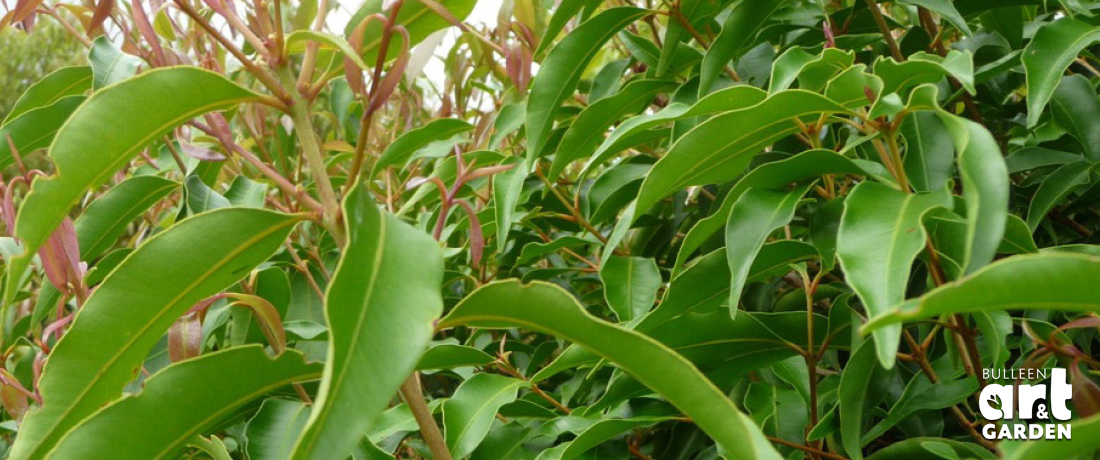
 Important note about plant availability. Important note about plant availability.There are hundreds of factsheets on our website provided for your information. Not all plants will be available at all times throughout the year. To confirm availability please call (03) 8850 3030 and ask for the nursery. |
Backhousia myrtifolia
Cinnamon myrtle is a subtropical tree from Eastern Australia. In the wild it can grow to 30m, but in cultivation it could grow to 7m. It is possibly the hardiest of the three myrtles discussed here. It has highly ornamental star-shaped cream coloured flowers in summer. The essential oil found in cinnamon myrtle is elemicin, which is also found in common nutmeg. Cinnamon myrtle leaves do produce a cinnamon –like aroma when crushed.
Cultivation
In the wild it is found growing along watercourses and it therefore likes a moist soil. It will tolerate full sun to part shade, but as with the other two myrtles, it would be best to position it where it will get some afternoon shade in summer, or it may become stressed in the hot, dry conditions. Unlike the other two myrtles, it is tolerant of light frosts. Ensure good summer moisture. Cultivate the soil with organic compost before planting.
Preparing for use in the kitchen
For use in tea, the leaves can be used fresh. Most recipes call for dried, ground leaves. Pick the leaves and wash to remove any dirt. Then, if you have time, you can leave them in a warm, dry place to dry, or you can speed up the process up by using a food dehydrator or the oven on a low temperature setting. Once dry, you can use something like a coffee grinder to make the leaves into a fine powder.
Uses in the kitchen
Can be used instead of cinnamon in cakes, cookies, pies and tea and in Middle Eastern dishes. It can also be rubbed on the skin for use as an insect repellent.
